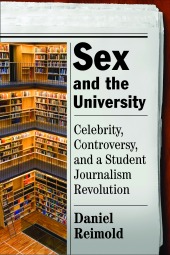The Daily O’Collegian at Oklahoma State University is enjoying marginal success with its paywall a bit more than a year into the experiment. At the start of spring semester 2011, the paper became the first U.S. student media outlet to charge a subset of readers for its content online, requiring a $10 yearly subscription fee for individuals outside the campus area who wanted to read more than three articles per month.
—
In an excellent new piece on PBS MediaShift, Alexa Capeloto provides a progress report on the O’Colly’s efforts, confirming the paper now has 177 paid subscribers. The numbers beat the expectations of the paper’s GM, even prompting him to slightly raise the annual subscription fee to $15.
—
As Capeloto writes, “There wasn’t any national news on the OSU campus that might have lured a burst of new paid subscribers. They came slow and steady, never exceeding three per day. Looking ahead, [the GM] has budgeted $3,000 to $4,000 in revenue from online subscribers for the next fiscal year– again, a mere drop in the outlet’s $700,000 budget, but a drop nonetheless.”
—
 —
—
I am quoted toward the close of the report as a voice of caution, if not dissent, regarding any future expansion of similar paywall schemes throughout the student press. The gist of what I told Capeloto during a phone chat late last week:
—
As a huge fan of innovation and experimentation within college media, I enthusiastically applaud the O’Colly for being a paywall pioneer. Given that the financial outlooks for many student outlets have soured in recent semesters, any attempt within reason to generate revenue must be seen as a positive. But do I think the mass adoption of paywalls by student press outlets nationwide is a good thing at this moment? No, I do not.
—
The O’Colly is a top-tier publication, boasting daily content online and a huge alumni and supporter base worldwide interested in checking out what’s happening at OK State. In Occupy Wall Street terms, the O’Colly is among student media’s 1 percent.
—
By comparison, a large majority of student media appeal to a very small readership. And while their content might be appreciated, paying for it will most likely be a deal-breaker for all but a few diehards. We need to be honest: Most student newspaper websites are nothing more than slightly repackaged versions of their print editions and are not updated more than once a week. For free, they are fun reads, but they don’t exactly scream worth-a-fee quality. Even with an uber-cheap paywall, it is hard to imagine most papers getting 17 subscribers, let alone 177.
—
Along with potentially turning away readers without generating much revenue, paywalls at heart also go against the purpose of the student press. For the moment, campus media are still learning vehicles more than moneymaking ventures. In that spirit, students must be able to share, share, share their work with others, without restriction, enabling them to join a larger conversation and learn firsthand about reporting and interacting with the public beyond the classroom or campus.
—
They also must be able to promote that work, and themselves. I dislike the notion that students may have to add an addendum to all articles placed on their online portfolios or within all messages sent to prospective employers. (“You can look at the first three for free, but then you have to pay or I can send you a one-time special access code or here it is simply in the text of an email…”).
—
And what about when big news breaks– a campus shooting, out-of-control protests, a visit by a head of state– and media and a mass audience are seeking constant updates? I recall months back when the O’Colly had a situation of interest that was mentioned on a popular college media advisers’ list-serv. A number of advisers wanted to read the newspaper’s pieces, but of course quickly ran into a paywall brick wall.
—
There are undoubtedly loopholes galore allowing the right people to see things for free at the right time, but the idea of only being free under special circumstances versus being accessible-by-default seems backward at the student level. In this respect, lastly, there is the rabbit hole argument. I actually think the worst thing that can happen for the student press is not for paywalls to fail, but for them to be marginally successful. Why? Because that will institute even greater reader restrictions.
—
In just the past year, the O’Colly has raised its annual subscription fee– and it doesn’t even have 200 subscribers?! But it’s a typical move. For example, The New York Times recently reduced its monthly free article count by half, right around the one-year anniversary of its paywall. It seems the realization that a niche effort like this can generate even a little bit of money triggers a desire to squeeze even more money out of it.
—
So do I think the O’Colly’s minimally-priced, fairly-limited paywall restriction is troublesome currently? No, not really. What worries me is what will come next, because the trend appears to be higher prices and ever-fewer free reads.
—
What do you think???
—
—
Read Full Post »
































